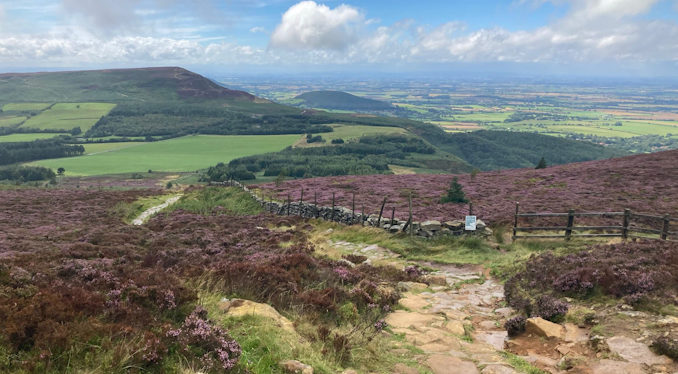
A cloud of uncertainty is hanging over the country’s largest network of public rights of way, due to an escalating row over their maintenance maintenance.
The North York Moors National Park Authority is next week due to join its Yorkshire Dales counterpart in declaring it unacceptable for councils with statutory responsibility for maintaining thousands of kilometres of paths and green lanes and hundreds of bridges, signposts, stiles and gates to make no contribution towards their upkeep.
Following a meeting in the Dales last week, a two-tier system of maintenance looks set to be introduced across the biggest area of the park, with less repairs being undertaken in North Yorkshire, after the council rejected an appeal for a £50,000 contribution towards the £1m annual cost of maintaining 1,898km of rights of way in the protected area.
However, Westmorland and Furness Council has recognised its statutory responsibility for 710km of rights of way maintenance in the park with funding of up to £45,000 a year.
Outside of the two national parks, the council is already responsible for the largest network of public rights of way in the country with more than 6,100km of footpaths, bridleways, restricted byways and byways open to all traffic.
A report to a full meeting of the North York Moors authority on Monday calls for its members, almost half of which are North Yorkshire councillors, to go a step further and consider handing back responsibility to North Yorkshire and Redcar and Cleveland for rights of way maintenance.
It states both local authorities have not contributed towards their statutory duties, which costs the national park £233,000 a year to perform, for some time and its government grant has remained at the same level for several years.
Under agreements with the councils, the park authority manages 2,357 km of public rights of way, which includes obligations to repair or replace 720 bridges, 3,300 roadside signposts, contribute 25 per cent to the cost of about 300 gates and 250 stiles a year and responsibility for the surface of all rights of way.
The officers’ report states while good management of rights of way is central to delivering the national park’s second purpose – to promote opportunities for the enjoyment of the area – delegation agreements with the councils make provision for a contribution to undertake the councils’ statutory duties.
The report adds due to the real terms drop in funding if the park authority tries to maintain the current standard of rights of way there is “a real risk at present of spreading our resources too thin”.
Options being presented to the authority’s members include handing back responsibility for all bridges, byways open to traffic, public rights of way with a sealed, or historically sealed surface and low and medium priority routes to the councils.
Other proposals include ending all enhancement and maintenance works unless part of an externally-funded project and developing volunteer groups or parish adoption of rights of way.
The report states: “We have been working closely with colleagues at the Yorkshire Dales National Park Authority (NPA) to ensure a joined-up approach.
“There is a strong appetite across both NPAs to engage stakeholders and the wider public on the unsustainable nature of the current situation and the reasons for this.”
North Yorkshire Council’s executive member for highways, Councillor Keane Duncan, has been approached for a comment.


Be the first to comment